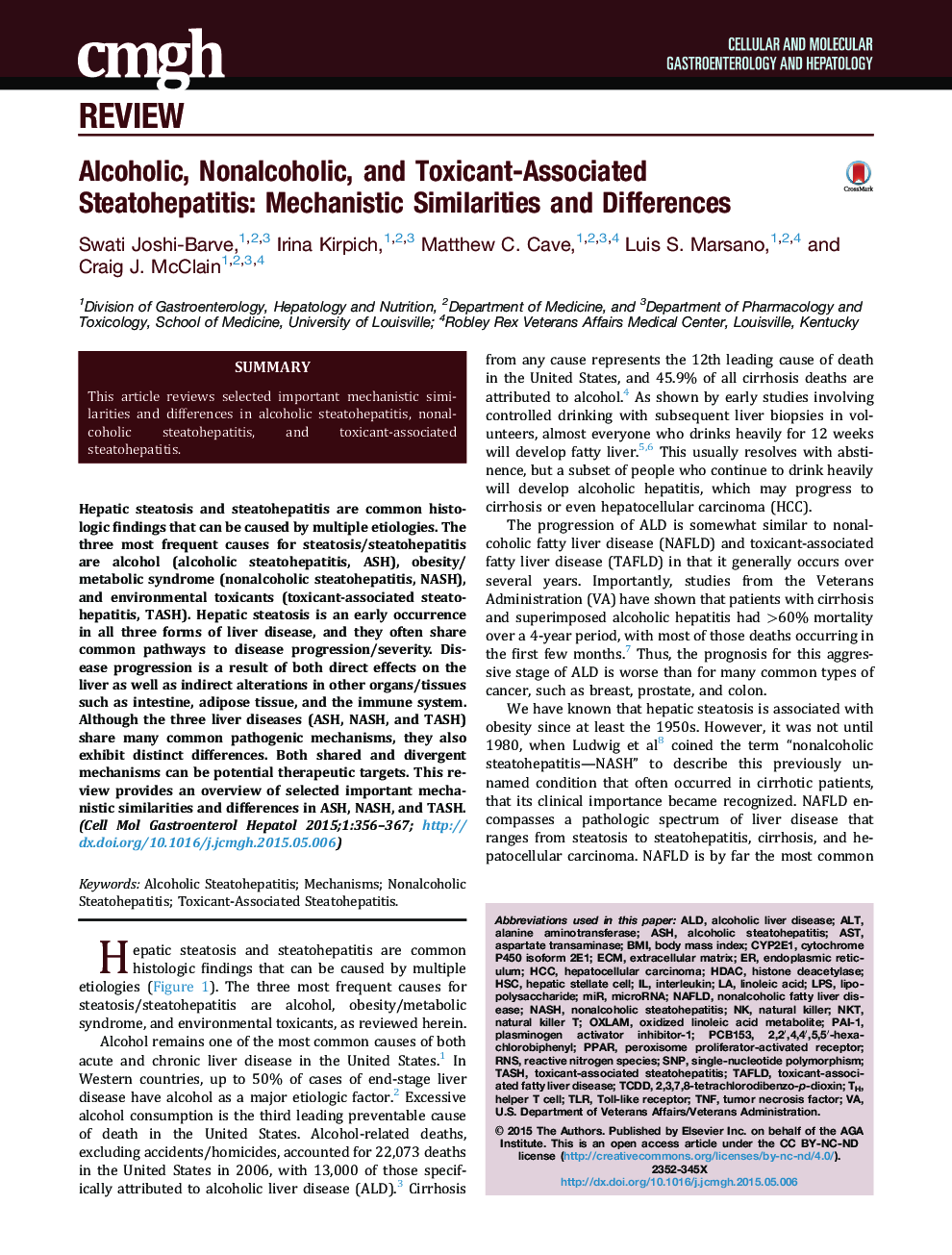| Article ID | Journal | Published Year | Pages | File Type |
|---|---|---|---|---|
| 2041706 | CMGH Cellular and Molecular Gastroenterology and Hepatology | 2015 | 12 Pages |
Hepatic steatosis and steatohepatitis are common histologic findings that can be caused by multiple etiologies. The three most frequent causes for steatosis/steatohepatitis are alcohol (alcoholic steatohepatitis, ASH), obesity/metabolic syndrome (nonalcoholic steatohepatitis, NASH), and environmental toxicants (toxicant-associated steatohepatitis, TASH). Hepatic steatosis is an early occurrence in all three forms of liver disease, and they often share common pathways to disease progression/severity. Disease progression is a result of both direct effects on the liver as well as indirect alterations in other organs/tissues such as intestine, adipose tissue, and the immune system. Although the three liver diseases (ASH, NASH, and TASH) share many common pathogenic mechanisms, they also exhibit distinct differences. Both shared and divergent mechanisms can be potential therapeutic targets. This review provides an overview of selected important mechanistic similarities and differences in ASH, NASH, and TASH.
